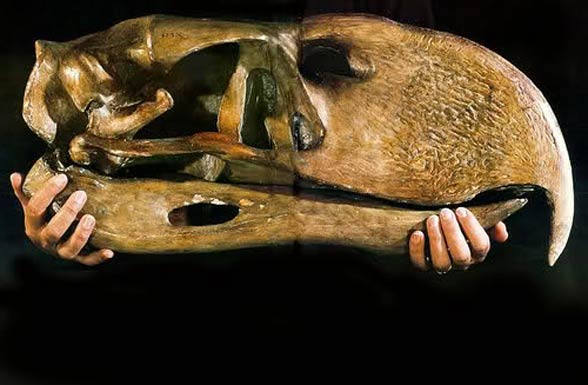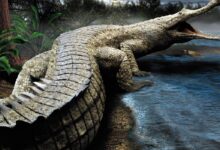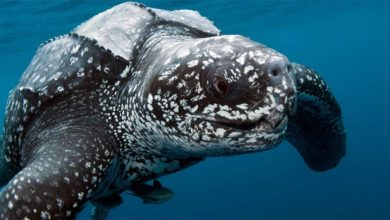Phorusrhacos – a scary bird
Phorusrhacos – a ‘terror bird’
Phorusrhacos, also known as the “terror bird,” was a prehistoric creature that roamed the forests and grasslands of South America millions of years ago. With its large size, powerful beak, and sharp talons, the Phorusrhacos was a formidable predator, feared by other animals in its ecosystem. Despite going extinct millions of years ago, the Phorusrhacos remains one of the most fascinating and enigmatic creatures to have ever lived. In this article, we will take a closer look at the world of the Phorusrhacos, examining its anatomy, habitat, and behavior, and uncovering the secrets behind its incredible adaptations and hunting strategies. So get ready to embark on an exciting journey as we delve into the fascinating world of the Phorusrhacos, and discover what made this ‘terror bird’ such a fearsome predator.
The “terror bird” was one of the biggest carnivorous birds of all time and was named for its extremely developed wings equipped with claws. Although it could not fly, nature adapted it to living on the ground, where it was a capable walker and a fearsome predator. Its greatest weapon was a powerful and strong beak. Below, we present the Miocene representative of land hunters – the Phorusrhacos which was ‘the owner of wrinkled jaws’.
Classification
- Kingdom: Animalia
- Clade: Dinosauria
- Class: Aves
- Order: Cariamiformes
- Family: †Phorusrhacidae
- Subfamily: †Phorusrhacinae
- Genus: †Phorusrhacos
- Species: †Phorusrhacos longissimus

The discovery
Phorusrhacos is known from remains that have been found in a few localities in the Argentine province of Santa Cruz. The first discovery of a piece of jawbone in the Santa Cruz Formation was made by the Argentinian paleontologist Florentino Ameghino at the beginning of 1887. At the time, Ameghino mistakenly identified it as a remnant of a toothless mammal and named it Phorusrhacos longissimus. He suggested that the mandibular sockets were characteristic of mammals and therefore the remains were not from a bird.

Name
The first part of the name – Phorusrhacos is derived from two Greek words: phoros which can be translated as ‘the bearer’ or ‘the carrier’ and rhakos which means ‘wrinkles’, ‘folds’, ‘scars’. The second part of the name probably refers to the wrinkled jaw surface although there are also other theories on this topic. The gender name – longissimus is derived from Latin and translated as ‘very long’, literally ‘the longest’. This term has a connection with the size of the found jaw.
In 1889, Ameghino changed the genus name to one that was more grammatically correct – Phororhacos. However, the original name, Phorusrhacos, has scientific priority.
This name defined the mammal from the moment of its discovery. It was only in 1891 – four years after the discovery of the unusual jaw – that Phorusrhacos was reclassified as a bird.

Dating
These enormous and scary flightless birds existed on Earth around 20-25 million years ago. The Phorusrhacos genus lived during the early and middle Miocene periods.
Distribution
The Phorusrhacos lived in the present-day Patagonia region, which is situated in the southern part of South America and includes territory in Argentina and Chile. This area is not heavily populated today.
The Phorusrhacos was known to inhabit grasslands and woodlands.

Characteristics
Appearance
Despite its large size, the Phorusrhacos was relatively light – it stood 2.5 meters (8.2 feet) tall and weighed around 130 kilograms (290 pounds). Its general build was similar to present-day flightless birds, with clearly reduced wings.
The characteristic feature of the Phorusrhacos was its sharp, hook-tipped claws on its relatively small wings. It also had huge claws on its toes, which it used to catch prey.
The main function of the claws on its feet and wings was catching prey. Flightless birds are usually depicted as hunting small and medium-sized animals, which can be difficult to catch with the claws of the upper limbs. It cannot be excluded that the bird used its atypical claws while eating, and not just for hunting. Another possible feature of the hooks is their adaptation for fights with other members of the same species.

The beak
The Phorusrhacos had a powerful hook-tipped beak characteristic of predatory birds, which could have been the main weapon for killing its prey. However, how this flightless bird could have used its beak as a deadly weapon remains a matter of debate. There are two theories on this:
- The first theory is based on observations of currently living South American seriema birds, the closest living relatives of Phorusrhacos. Present-day seriemas catch their prey using their beaks and then strike it on the ground, resulting in not only knocking it out or killing it but also numerous breaks. This makes it easier for the predator to swallow the hunted food. Seriema’s claws are also used to portion the meat out. Many paleontologists support the theory that the Phorusrhacos used to hunt and kill their prey in a similar way.
- The second theory suggests that the Phorusrhacos killed its prey by precise hits in crucial body parts using its beak, mainly the skull. This function of the beak is indicated by the hooked curve. The bird would then use it as a pickax to attack the prey from above. The powerful beak, combined with its hit, would cause a skull fracture and brain injury that would result in the quick death of the hunted animal.

The diet and the hunting tactics
Although it had an impressive size, it hunted small insects and mammals. Bigger animals were left for its heavier relatives, such as Brontornis.
Weak and small wings did not help in hunting; this function was taken over by its long and strong legs. It could easily chase its potential prey in open and vast areas. It would have no difficulty catching relatively fast and small animals.
However, it is possible that during hunting, the Phorusrhacos stood close to bushes and thin trees to resemble a harmless tree trunk. Such predators became unnoticed by small mammals. When the prey came close enough, the bird jumped out in front of it, leaving no time to react. When it caught the prey, it tore it apart with its claws to have better access to meat. It cannot be denied that the Phorusrhacos also ate carcasses.
Probably, the flightless bird did not have to run much after its prey. It could act more efficiently by surprise.

Detailed information / size
The Phorusrhacos
- Body height from the bottom to the top of its head: up to about 2.5 m (8.2 ft)
- the back was at a height of about 140 cm (4ft 7in)
- Weight: 130kg (290 lb)
- Speed: around 50km/h (31 mph), slower than an ostrich
- Dating: 20-13 million years ago
- Era: early Miocene – middle Miocene
- Distribution: South America, Patagonia

The Phorusrhacos – interesting facts
- The Phorusrhacos had a long, powerful skull that could measure up to 60cm in length.
- Close relatives of the Phorusrhacos include the Titanis walleri of North America, as well as the Kelenken guillermoi and Brontornis (Brontornis burmeisteri) found in South America. Kelenken is believed to be the largest predatory bird with the biggest skull of all birds, standing over 3m in height.
- According to one scientific theory, large predatory birds coexisted with the last dinosaurs during the cretaceous period and hunted for them contributing to the total extinction of the cretaceous salamanders.
- In the movie 10.000 BC, there are Phorusrhacos, next to mammoths, and the saber-toothed cat (smilodon), in the scene presenting hunting for the main character.




















Your Cassowary and Emu sizes are really out. They are human height easily